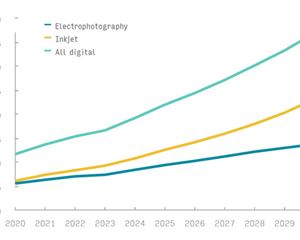Talking through the package: Customer information
The functional role of all packages has evolved. In the modern retail era, packaging is largely utilised as a marketing tool to promote the product, increase visibility on the shelf, and to provide information to the customer.
17 Nov 2014 | By Sethunath Padmanabhan
Brands today need to communicate to the consumer. This includes communicating the brand values, messages and information about the product or service provided. While communicating, talking about value of a brand is done indirectly, the message of the brand and product information is very much direct in nature. Today for brands, more than all the various media of communication like ATLs and BTLs, the single biggest strength lies in communicating through its packaging.
Brands create this communication on their packaging both in graphical and textual manner. There is too much of information that the brand needs to communicate to their consumers. Information that is direct and relevant like brand claims, which explain what the brand delivers, statutory information, which are largely government regulated and mandatory information, usage, safety and hazard information, ingredients and nutritional facts, social messages, environmental safety considerations, etc.
More than ever before, consumers have now become curious and smarter. With growing education and awareness, today’s consumer seek information. They want to know exactly what their product offers before making a purchase decision. In a limited space available on a product packaging, the consumer looks for information related to health benefits, product quality and value. Nutritional facts, ingredients, special health claims, life of the product, etc. help them in knowing the health benefits that the product offers. Quality claims and customer support assurance along with add-on certification like ISO, FSSAI, etc. much of which are regulatory and statutory in nature, comfort them on the product quality front.
Value is derived from the combination of multiple aspects including health benefits, quality claims, product price, special offers, as well as social messages like eco-friendly, charity, no-child labour claims, etc. The consumer looks for all this information on a product before making a buying decision and when they do not find the relevant information, they are not afraid of trying a new product.
It is an already small area on the pack for packaging and brands have to constantly evolve with the growing number of regulatory information that has to be present on the packaging. With the limited area available, brand owners have to innovate and execute unique methods that will not only include the regulatory information, but also excite the consumer with more product based information.
This is where packaging can transcend physical boundaries and go into the virtual world to provide more information and excitement to the consumer. Today, there are organisations which create augmented reality applications that can be accessed from smartphones that are connected to the internet and give the consumer double the joy and indirectly, double the brand loyalty when they access the fascinating world created especially for them, via the web.
If the product is an FMCG brand related to chocolaty breakfast cereal, the consumer can just flick their smartphone over the packaging and be connected with a virtual fantasy land that not only interacts, but educates the consumer, while they are eating that cereal. Undoubtedly this is the future, which extends from packaging into the virtual world of more information and interaction.
Consumers today clearly expect packaging in their hand to be an encyclopedia providing all the expected information of the product inside. Growth in future will be for brands that will use innovative ways to provide more and more information to the consumer through the medium of their packaging to excite them to buy it from the shelf and to keep them hooked and engaged through packaging even after the purchase.












 See All
See All